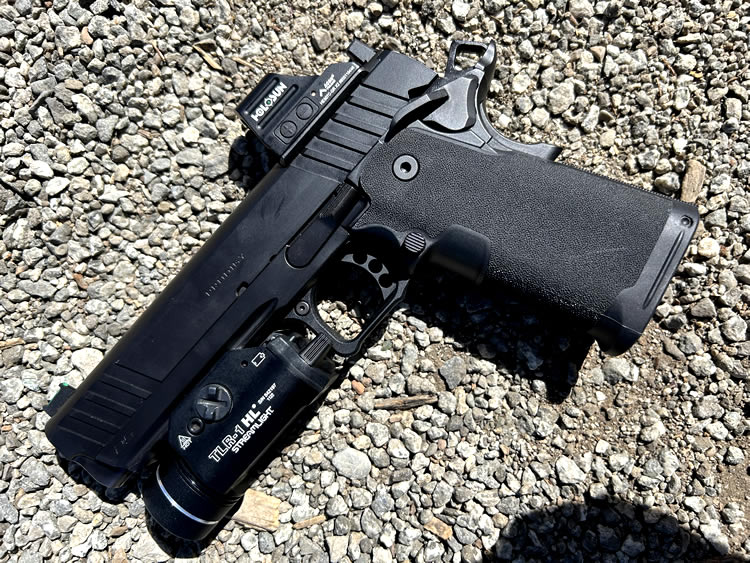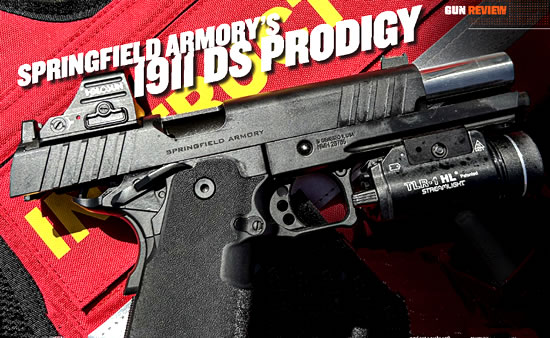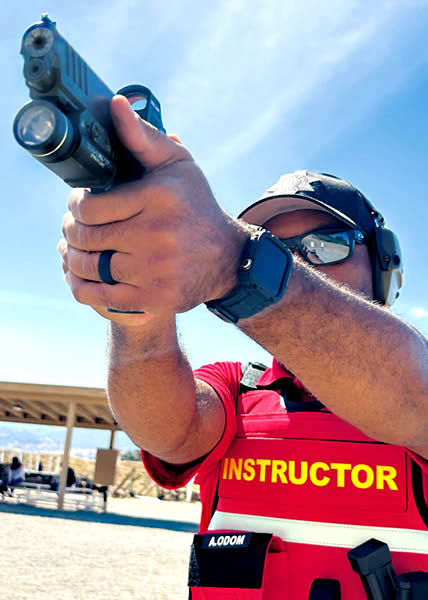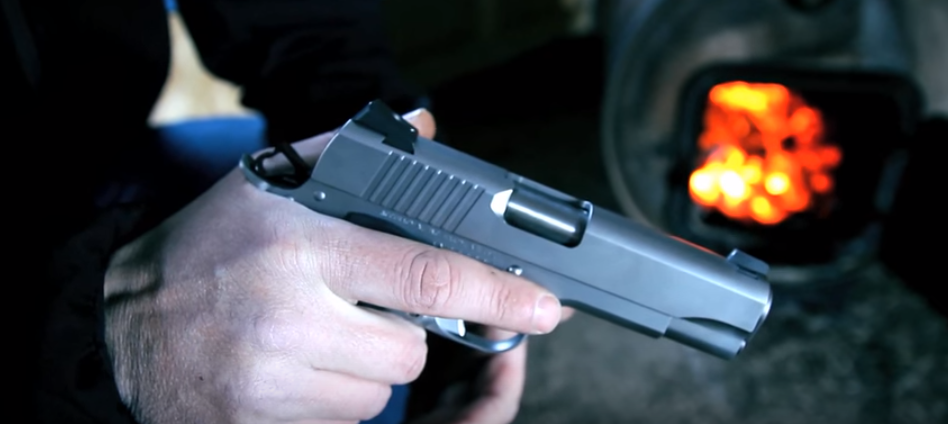
Springfield Armory’s 1911 DS Prodigy

A look at the Specs and Field-Test Results for this newer, more Affordable 9mm Handgun
Story and Photos by Nick PernaImitation is the sincerest form of flattery. Last month I wrote about the Staccato series of 9mm handguns. These “2011s” (a modernized version of the venerable M1911A1 series) are the “it” guns on the market today for serious shooters wanting a reliable, accurate platform.
It was inevitable that the other firearm manufacturers would realize that there is a market for similar guns. Enter Springfield Armory. The company has been in business for almost 50 years making quality firearms and is most famous for its M1A series, the civilianized version of the M14 rifle.
The company’s other signature firearm is the Springfield XD handgun. In a market flooded with polymer handguns, the XD has carved out a niche with sport shooters and law enforcement folks alike. Springfield Armory also entered the AR market a few years back with the Saint, an excellent carbine that,
like the XD, has distinguished itself as a platform that has to compete with the multitude of AR manufacturers.

THE SPRINGFIELD ARMORY gun that resembles the Staccato is the 1911 DS Prodigy. Introduced in 2022, the Prodigy is a sturdy gun based off the M1911A1 platform. Like the Staccato, it is 9mm, with a double-stack magazine that gives the shooter 17+1 rounds with one in the chamber. The company also makes a 20+1 magazine. These guns are optics-ready and have a solid Picatinny rail for mounting lights or lasers.
DS Prodigy. Introduced in 2022, the Prodigy is a sturdy gun based off the M1911A1 platform. Like the Staccato, it is 9mm, with a double-stack magazine that gives the shooter 17+1 rounds with one in the chamber. The company also makes a 20+1 magazine. These guns are optics-ready and have a solid Picatinny rail for mounting lights or lasers.
Other features include an extended ambidextrous thumb safety. This is a must-have on a M1911A1 platform, as the handgun is carried “cocked and locked.” As a left-handed shooter, I appreciate the ambidextrous aspect. It has a skeletonized trigger, which is a nice, aesthetic touch. The gun is sealed in black cerakote, a tough finish that protects guns, and the grips are made of black polymer. The slide has forward slide serrations for press checking the gun. The Prodigy comes out of the box with an excellent sighting system. The front sight is a green, fiber optic dot. The rear is a U-notch sight. Some manufacturers don’t equip their guns from the factory with good sighting systems (hint: there’s a gun company that rhymes with “Rock” that does this), so it’s nice to see this. If you mount an optic on it, you may want to consider changing to suppressor sights since they are easier to co-witness with an RMR.

The barrel is offered in two lengths, 4.25 and 5 inches. Both are match-grade bull barrels made from forged stainless steel and feature an 11-degree crown at the business end. This is important. One of the main factors that can affect gun performance is a properly maintained crown. If the crown gets scratched or dented in some way, it will adversely affect how the bullet exits the barrel. A recessed crown helps protect the end of the barrel from damage. It’s a good feature to have, especially with a gun that is going to be carried routinely and could take some abuse.
Springfield’s base model Prodigy has an MSRP of $1,499, a price that includes one 17-round magazine and a 20-round magazine. Their top-end model, the AOS, comes with a Hex Dragonfly RMR and goes for $1,699. Considering that there is only a $200 difference for a gun that includes an optic is a pretty good deal. For comparison, the Staccato base model goes for over $2,500.
The one negative I’ll point out is the cost of magazines. Prodigy magazines go for $60 each. That’s pretty close to the price of a Staccato mag, which costs $69. This may be an area that Springfield Armory wants to address. That being said, you get what you pay for. Good magazines are an integral part of a well-functioning firearm, so you don’t want to skimp on that. With time, I expect that there will be after market magazines available.
I RECENTLY HAD the opportunity to put the Prodigy through its paces. The handgun I used had a Holosun optic mounted on it. This allowed for quick, accurate shots. I also turned the optic off and used the issued sights. The iron sight also worked well.
Trigger pull is around 4.5 pounds. I’m a firm believer in the fact that smoothness and consistency are the most important factors in trigger dynamics. Trigger weight is obviously an issue, but 4.5 pounds is a good weight, especially for a M1911A1 platform being carried cocked and locked. Trigger reset was quick, an important feature for a situation requiring follow up shots.

I was able to get off quick, consistent shots. The recoil was less than some lighter polymer guns on the market. A 9mm round in a frame designed for a .45-caliber round is a good combination for recoil mitigation. The Prodigy weighs in at a solid 2 pounds, 4 ounces.
The grips are a little thicker than a standard M1911A1, but not too big to be uncomfortable. The grips also have a light stippling. The trigger guard is beveled, and the rest of the gun is dehorned for a smooth feel. The magazine release is on the left side of the trigger guard and, to my knowledge, not interchangeable. The magazines clear the mag well quickly. I found magazine changes to be quick.
The slide release isn’t ambidextrous either. This is typical of most 1911s.
Assembly and disassembly is pretty much the same as any M1911A1-type gun. For younger users who have become accustomed to more modern designs that are a breeze to take apart, the M1911A1 might seem a little daunting at first. But, with a little practice, it becomes second nature. It comes with a hex
wrench to aid in takedown. If you’re looking for a solid performer at a comparably more affordable price point, check out the Prodigy. Visit springfield-armory.com for more.




